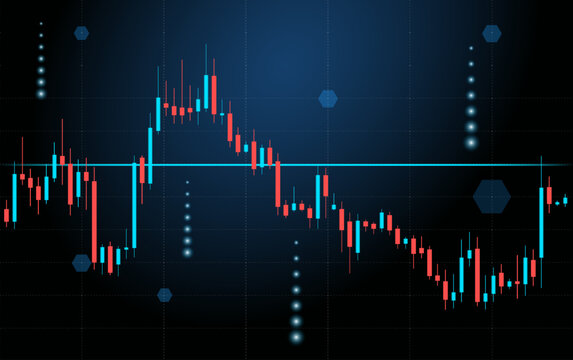Share the post "Vxl Instruments Shareholding pattern FY(Q2-Sep 2024-2025)"
Shareholding results offer insight into the distribution of shares among various investors, highlighting the levels of institutional and retail ownership. These results are significant for analyzing investor confidence and market sentiment. Understanding shareholding patterns can aid stakeholders in predicting how changes in ownership might affect a company’s stock performance. Vxl Instruments has released its latest shareholding reports, covering the Second quarter and the fiscal year ending on (Q2-Sep 2024-2025).This detailed report examines who owns shares, including Promoters, promoter groups, Foreign investors, public investors, and government entities.
| Shareholder Name | Previous Quarter Quantity(In Crores) | Current Quarter Quantity(In Crores) | Previous Quarter Shares(in %) | Current Quarter Shares(in %) | Quarter to Quarter Difference |
|---|---|---|---|---|---|
| Promoters | 0.06 | 0.06 | 4.72 | 4.72 | 0 |
| Public | 1.27 | 1.27 | 95.22 | 95.22 | 0 |
| DII | 0.00 | 0.00 | 0.03 | 0.03 | 0 |
| FII | 0.00 | 0.00 | 0.03 | 0.03 | 0 |
| Government | 0 | 0 | 0 | 0 | 0 |
Promoters shareholding remained stable, at 4.72% in both June 2024 and September 2024. This indicates that the promoters’ control over the company did not change during this period. Public shareholding remained consistent, holding steady at 95.22% in both June 2024 and September 2024. This indicates that the Public control over the company did not change during this period. DIIs (Domestic Institutional Investors) shareholding remained unchanged at 0.03% from June 2024 to September 2024. This indicates that domestic institutions maintained their investment level in the company. FIIs (Foreign Institutional Investors) shareholding remained at 0.03% from June 2024 to September 2024. , indicating no change in the investment levels by foreign institutions in the company.
Let’s look into the statistics of the investors, which could have contributed to the fluctuations in the shareholding pattern.
| Shareholder Name | Previous Quarter Quantity (In Crores) | Current Quarter Quantity (In Crores) | Previous Quarter Shares (in %) | Current Quarter Shares (in %) | Quarter-to-Quarter Difference (%) |
|---|---|---|---|---|---|
| Resident Individuals holding nominal share capital up to Rs. 2 lakhs | 0.204 | 0.200 | 15.35 | 15.02 | -0.33 % |
| Resident Individuals holding nominal share capital in excess of Rs. 2 lakhs | 0.092 | 0.097 | 6.94 | 7.29 | + 0.35 % |
| Non Resident Indians (NRIs) | 0.567 | 0.567 | 42.53 | 42.52 | -0.01 % |
| Bodies Corporate | 0.125 | 0.125 | 9.42 | 9.41 | -0.01 % |
| Any Other (specify) | 0.201 | 0.201 | 15.09 | 15.08 | -0.01 % |
| HUF | 0.008 | 0.008 | 0.59 | 0.58 | -0.01 % |
Observations show a significant difference of -0.33 % in Resident Individuals holding nominal share capital up to Rs. 2 lakhs’s financial performance between quarters.Leading the way to higher stakeholding, Resident Individuals holding nominal share capital in excess of Rs. 2 lakhs has significantly boosted stakeholding by an impressive 0.35 %.Observations show a significant difference of -0.01 % in Non Resident Indians (NRIs)’s financial performance between quarters.Observations show a significant difference of -0.01 % in Bodies Corporate’s financial performance between quarters.Observations show a significant difference of -0.01 % in Any Other (specify)’s financial performance between quarters.Observations show a significant difference of -0.01 % in HUF’s financial performance between quarters.
12
3-Year Profit
11
5-Year Profit
5
10-Year Profit
5.80
Current Price
7.73
Market Cap
The financial outlook for the company under BSE code 517399 reveals a significant five-year profit of 11 percents. This marks a notable increase to 12 percents over the last three years, indicating a strong upward trend in the company's financial health during this period. However, it's important to note that recent challenges have impacted the company's performance, leading to a trailing twelve-month loss of -14 percents. This sharp decline in profitability is particularly concerning, as the company has also reported no sales across any analyzed timeframe, suggesting a highly unconventional and perhaps risky operational approach. The company's stock prices mirror this financial volatility, with the stock trading at 33 percents over the past five years but experiencing a dramatic drop to -14 percents within the last year. Over a decade, the stock price was at -12 percents, reflecting long-term concerns regarding the company's stability and future outlook. Such performance poses questions about the sustainability of the business and whether it can rebound from these recent setbacks.
Currently valued at ₹7.73 crore, the company's stock price stands at ₹5.80. Over the years, it has seen significant fluctuations, with its price ranging from ₹8.15 / 3.97, a reflection of its sensitivity to market conditions and investor sentiment. The stock's Price-to-Earnings (P/E) ratio, currently at , suggests that it is highly valued in comparison to its earnings, possibly indicating strong future growth expectations or a high level of investor confidence. The book value per share is ₹4.67, which represents the net asset value of the company per share. The dividend yield of 0.00% provides some return to investors, though it may not be the primary attraction for those investing in the stock. The company's Return on Capital Employed (ROCE) is -28.4%, pointing to efficient use of its capital base to generate profits. The Return on Equity (ROE), at -49.1%, highlights the profitability for shareholders. The company's financial health is further underscored by its very low debt-to-equity ratio of 0.62, signaling conservative financial management. However, the net cash flow is negative at ₹0.62 crore, indicating possible liquidity concerns or heavy investment. The Piotroski score of 3.00 provides a snapshot of its financial stability, while the Graham Number, estimated at ₹, offers an intrinsic value benchmark. With a Price-to-Book (P/B) ratio of 1.24, the stock seems to be trading at a premium relative to its book value, which could signal strong market expectations or overvaluation risks.

![[fetch_key]](https://stocktradeupdates.com/wp-content/uploads/new_logos/VXLINSTR.png)

![[fetch_key]](https://stocktradeupdates.com/wp-content/uploads/new_logos/SHALIWIR.png)
![[fetch_key]](https://stocktradeupdates.com/wp-content/uploads/shareholding/getty_519578900_346915.jpg)